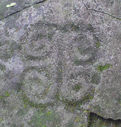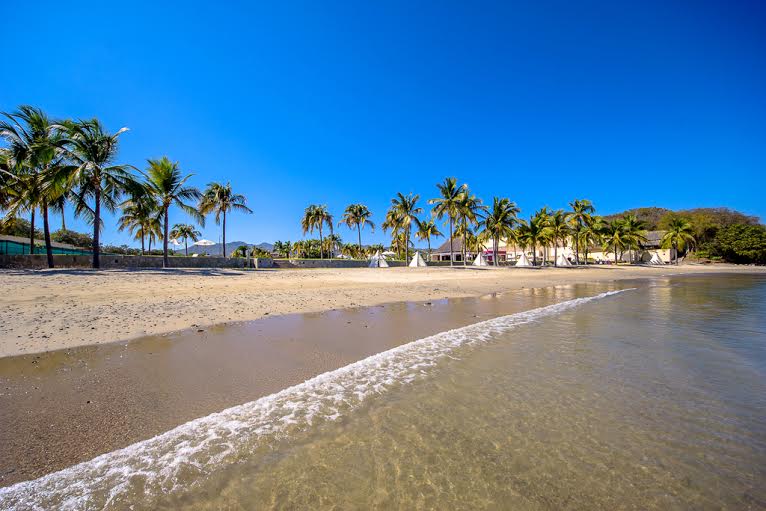Altavista Petroglyphs
Petroglyphs Overview
The Altavista Petroglyphs in the Riviera Nayarit, Mexico, are part of an intriguing archaeological site northeast of Jaltemba Bay. Identified locally as ”La Pila del Rey,” the site is one of the largest known concentrations of stone engravings (petroglyphs), containing over 2,000 on 200 acres. Although less than half of them can be seen through the jungle brush, enough are visible that make the site worth visiting.
 These fascinating engraved stones were carved over two thousand years ago by the Tecoxquines, an Aztec tribe, that went into extinction after the 16th century from disease brought by the Spanish invaders. The petroglyphs are believed to hold religious significance to the Tecoxquin, since images appear to reflect communication with the gods. Today, the site is sacred to the Huichol Indians who sometimes use it for religious ceremonies.
These fascinating engraved stones were carved over two thousand years ago by the Tecoxquines, an Aztec tribe, that went into extinction after the 16th century from disease brought by the Spanish invaders. The petroglyphs are believed to hold religious significance to the Tecoxquin, since images appear to reflect communication with the gods. Today, the site is sacred to the Huichol Indians who sometimes use it for religious ceremonies.
Altavista is hidden in the mountains of the Riviera Nayarit along Las Piletas Creek of El Copo volcano. About a 30-minute drive from La Peñita de Jaltemba, it requires driving on a rough dirt road with sharp rocks but is definitely accessible in higher profile vehicles. Some local tourist companies provide van transportation, so be sure to ask your hotel concierge or travel agent.
Getting to Petroglyphs
One easy to visit attraction on the Riviera Nayarit are the Pertroglyphs near Altavista.
The exit to Altavista and the petroglyphs is between kilometer (km) 81 and km 82 on Highway 200 along the Mexican Riviera coast in the state of Nayarit. The sign for Altavista says 7 km on it.
Once you have exited Highway 200, you are headed into the jungle and up into the mountains. What a beautiful site! As in all things Mexico, the first stop 100 meters in is the Deposito or beer store. Load up your cooler or backpack, and progress up the dirt road about a mile, or 1.6 kilometers, where you come to a lovely fork in the road.
Turn left at this fork. Going to the right takes you to the town of Altavista, another 5 kilometers up the road, and well worth the visit itself.
Altavista
Altavista is a town in rural Mexico with about 200 homes. Built into the side of the hill with a beach view, you can see for miles in every direction save back into the mountain.
Getting to the petroglyphs is now on rougher roads and more into what I would call cultivated jungle. You pass through many orchards of mango, guanabana, papaya, jacka, as well as traditional coconuts, bananas and pineapples. Come in the summer and you will see the trees filled with fruit.
At the end of the road, after following the river for the last many meters, you come to a parking spot with a covered area – and Mr. Gonzalez. It is expected you pay 20 pesos per person to park there on his property.
Petroglyphs
From the parking lot, you traverse a simple stall to keep motorized vehicles out, and you are literally meters or yards away form the first rock covered with ancient drawings. All over the hillside you can see ricks with carvings of the sun, moon, fish, iguanas, crosses and various other animasl and symbols.
Various scholars have interpreted these drawings in many ways, but they are believed to have been created by some of the original indigenous tribes of old Mexico, the Tecoxquines Indians.
Tecoxquines Indians – Religious Ceremonies
Several of the rocks with carvings are large enough for sacrifices, and the native indians were big on religious ceremony. Many of these religious activites held here were based on Nahualism. Nahualism, or Shamanism, is an ancient religious practice, where participants commuinicate with their gods and spirits through altered states of consciousness. This tradition has deep roots in the region. The state of Nayarit derives its name from Nahualu.
Summary: The Altavista Petroglyphs in the Riviera Nayarit, Mexico, are part of an intriguing archaeological site northeast of Jaltemba Bay. Identified locally as ”La Pila del Rey,” the site is one of the largest known concentrations of stone engravings (petroglyphs), containing over 2,000 on 200 acres. Although less than half of them can be seen through the jungle brush, enough are visible that make the site worth visiting.
These fascinating engraved stones were carved over two thousand years ago by the Tecoxquines, an Aztec tribe, that went into extinction after the 16th century from disease brought by the Spanish invaders. The petroglyphs are believed to hold religious significance to the Tecoxquin, since images appear to reflect communication with the gods. Today, the site is sacred to the Huichol Indians who sometimes use it for religious ceremonies.
Altavista is hidden in the mountains of the Riviera Nayarit along Las Piletas Creek of El Copo volcano. About a 30-minute drive from La Penita de Jaltemba, it requires driving on a rough dirt road with sharp rocks but is definitely accessible in higher profile vehicles. Some local tourist companies provide van transportation, so be sure to ask your hotel concierge or travel agent.
View all our pictures of the Petroglyphs in our photo gallery.
















[...] about the Riviera Nayarit, please check out our site RivieraNayaritFun.com If your interested in an Alta Vista Petroglyphs tour please contact me for more information. It’s an amazing place! Have a fun week filled [...]
[...] and take some time to cross off that “to do” list. If you are interested in an Alta Vista Petroglyphs tour email me at Cat@RivieraNayaritFun.com . Click on the photos that have the Riviera Nayarit Fun [...]
[...] week I was blessed with the opportunity to visit the Altavista Petroglyph Site in Nayarit, Mexico. Also known locally as “La Pila del Rey,” which could be translated as “The Basin of the [...]